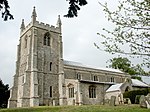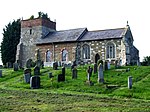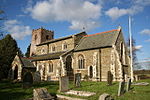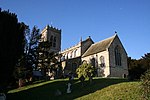Thorpe St Peter
Civil parishes in LincolnshireEast Lindsey DistrictOpenDomesdayUse British English from November 2014Villages in Lincolnshire

Thorpe St Peter is a village and civil parish in the East Lindsey district of Lincolnshire, England, about 1 mile (1.6 km) north-west from the town of Wainfleet. Thorpe is listed in the Domesday Book of 1086 as having 33 households, two mills and a church.The parish church, dedicated to Saint Peter is a Grade I listed building dating from 1200 with later additions and alterations, and restored in the 19th century. It is built of greenstone and limestone. The west tower dates from the mid-14th century, and there is an early 13th-century font.Thorpe Culvert railway station was opened here in 1873.
Excerpt from the Wikipedia article Thorpe St Peter (License: CC BY-SA 3.0, Authors, Images).Thorpe St Peter
Wainfleet Road, East Lindsey
Geographical coordinates (GPS) Address Nearby Places Show on map
Geographical coordinates (GPS)
| Latitude | Longitude |
|---|---|
| N 53.122815 ° | E 0.21623 ° |
Address
Wainfleet Road
Wainfleet Road
PE24 4NS East Lindsey
England, United Kingdom
Open on Google Maps










